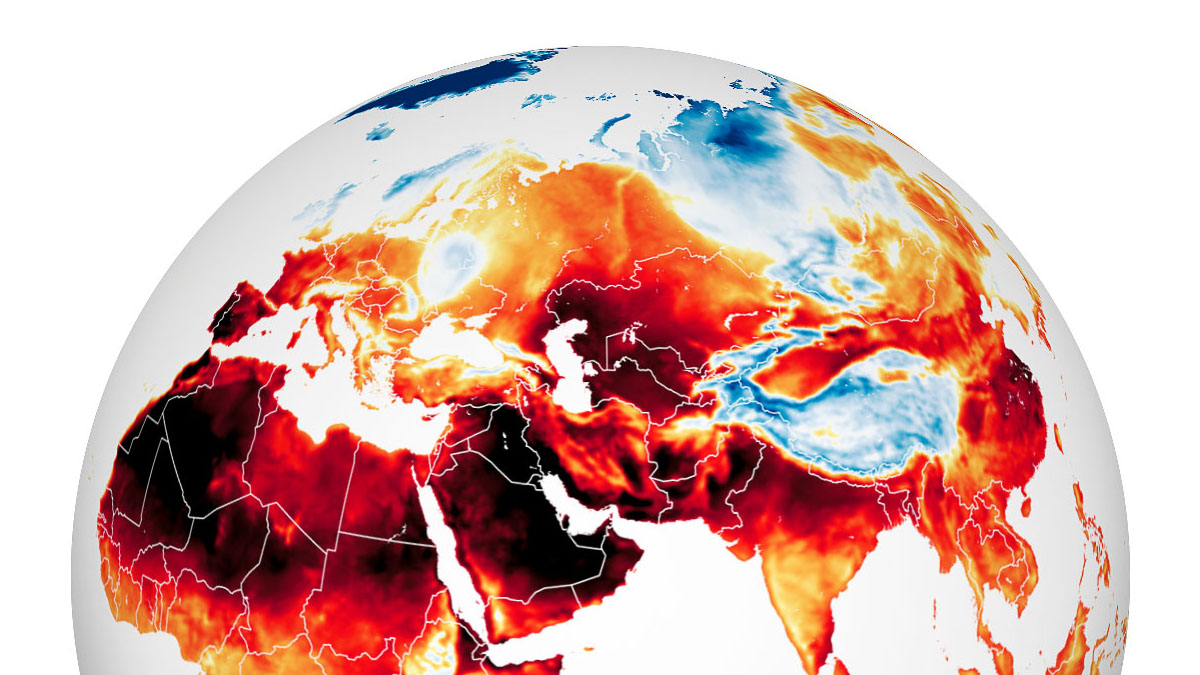yes, all these heat waves are actually very bad

Nearly a decade ago, climatologists were warning us that heat waves are about to become more widespread and dangerous. This summer, the Northern Hemisphere is broiling, with China, the UK, and the Mediterranean seeing prolonged highs above 40 °C, or 104 °F, while temperatures soared to 52 °C, or 126 °F in Iran. Records are being broken left and right while wildfires are spreading and hundreds of people are dying. In short, things are getting pretty scary as world leaders dither on decisive, global solutions to climate change so much so that engineers are banking on space balls to avoid the apocalypse.
Unfortunately, this is where denialists rush in full force. Oh, the Earth has been hotter, why are we surprised that it’s hot in summer, and what’s a few more degrees anyway, and having finally moved on past declaring global warming a hoax, they’re now arguing that actually, it’s a great thing that will supercharge crops and wildlife. Every one of these arguments is both insipid and malicious, intended as a coping mechanism or a stalling tactic so they can either justify making the climate worse, or ignore the fact that very tough times are beginning.
First and foremost, let’s talk about Earth’s climate history. Yes, it’s true that with an average global temperature of 14 °C, or 57 °F, we are nowhere near the hottest the planet has ever been. That title belongs to a million year stretch starting 56 million years ago, when Earth’s average hit 22.7 °C, or 73 °F, and the world was tropical pole to pole. But we did not evolve in this heat. We evolved in an interglacial period with temperatures similar to the middle of the past century, and while we can withstand plenty of dry heat, we are not a tropical species.
In fact, there’s something known as the wet bulb temperature at which the combination of heat and humidity keeps us from cooling down and causes fatal heat stroke. They start around 36 °C, or 97 °F, which you may notice is less than some of the highs being recorded this summer, so a high level of humidity means that prolonged exposure to such hostile weather will be deadly for those living without air conditioning or access to some way to mitigate the searing sun. (That’s about two thirds of humans, by the way.)
On top of that, many cities simply don’t have the infrastructure to handle the rapidly warming climate. When they were built, a summer heat wave or a seasonal storm caused damage, but nothing that couldn’t be cleaned up fairly quickly. Today, flooding tunnels and subways, sinking soil, and overburdened electrical grids mean that coastal cities and major desert hubs around the world are straining to maintain themselves, and are far from ready from holding against the full brunt of the changes now unfolding.
Which brings us to the third nonsensical claim by denialists, that this will somehow be a boon for agriculture because more places on Earth will be able to grow food. They won’t. Crops that are already facing climatic headwinds will fail and agriculture will have to move further north. We will not have more farmland. We’ll just have different farmland that we’ll be struggling to support with ever dwindling water sources. This will be especially acutely felt in the Global South, causing wave after wave of refugee crises, civil wars, and other horribles that will kill millions.
In short, we simply do not have the physiology and infrastructure to comfortably live in a world that may warm as quickly as 4 °C in only 150 years. The last time Earth got 6 °C hotter in 10,000 years, it was nearly sterilized in the process. Our current trajectory is not in any way sustainable over the short term, much less centuries down the line, even when we account for all the work done to avoid the absolute worst case nightmare scenarios despite our current crop of leaders. These heat waves are not an inconvenience. They’re dire warnings. And we need to heed them.





